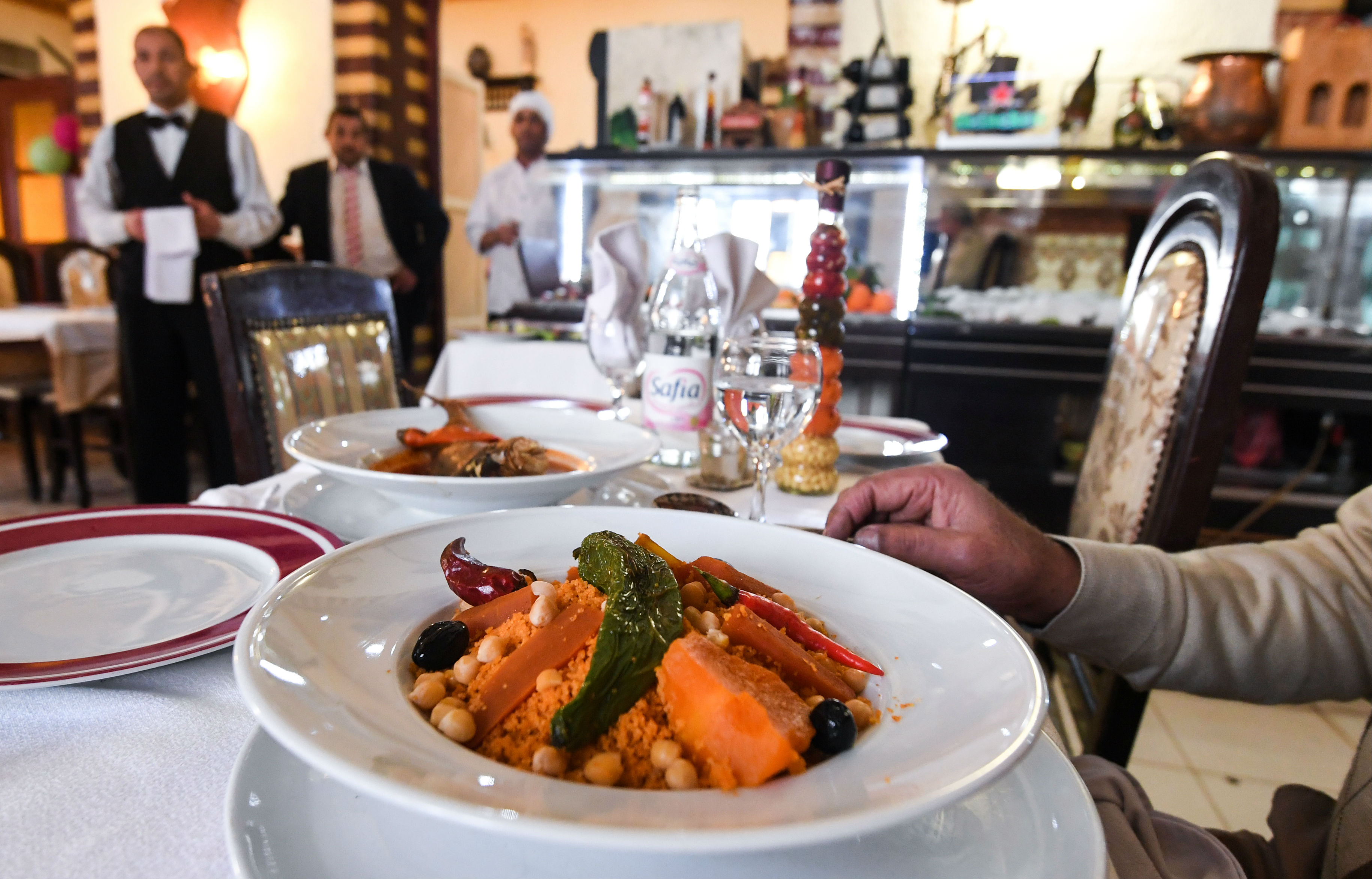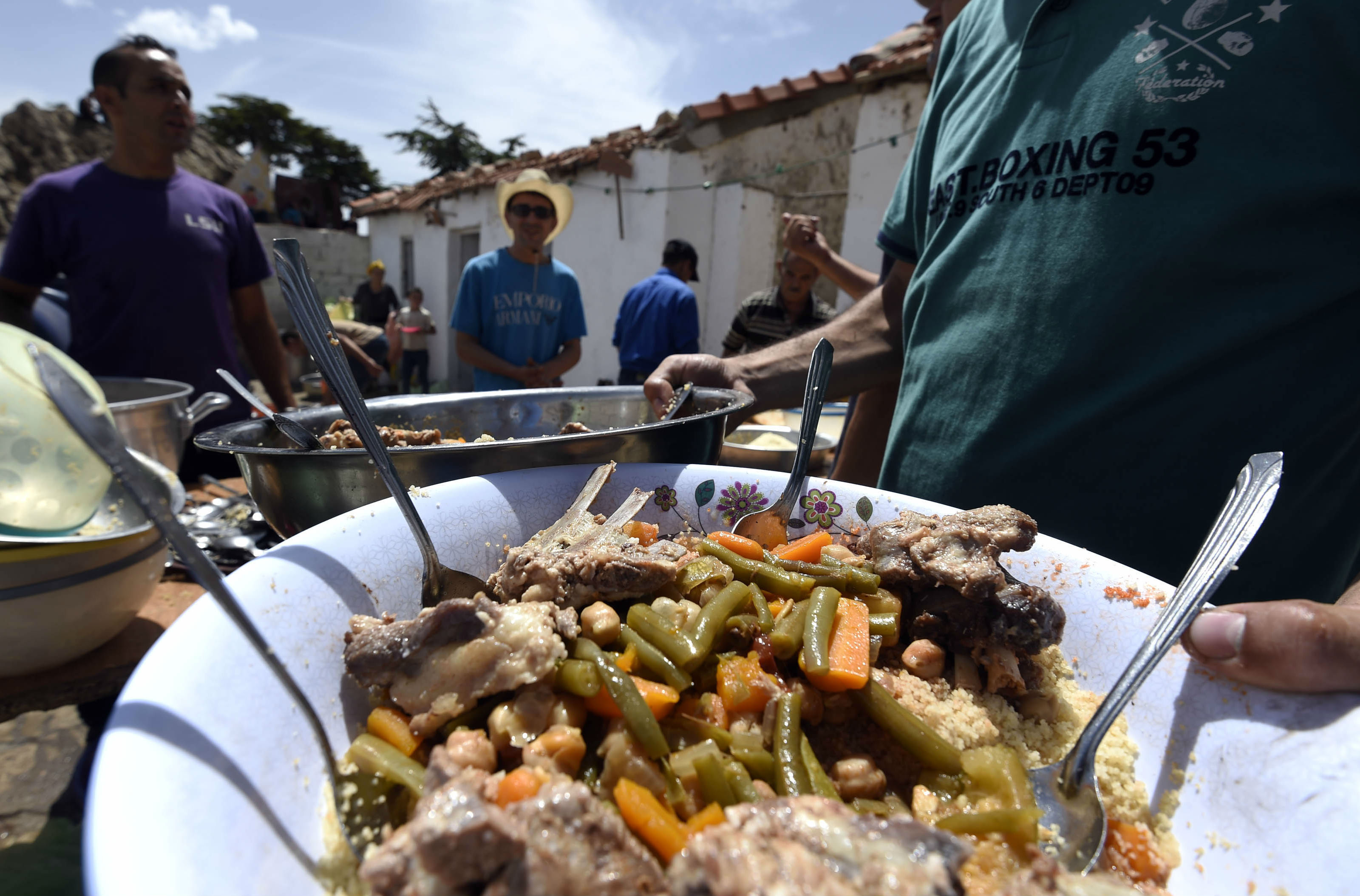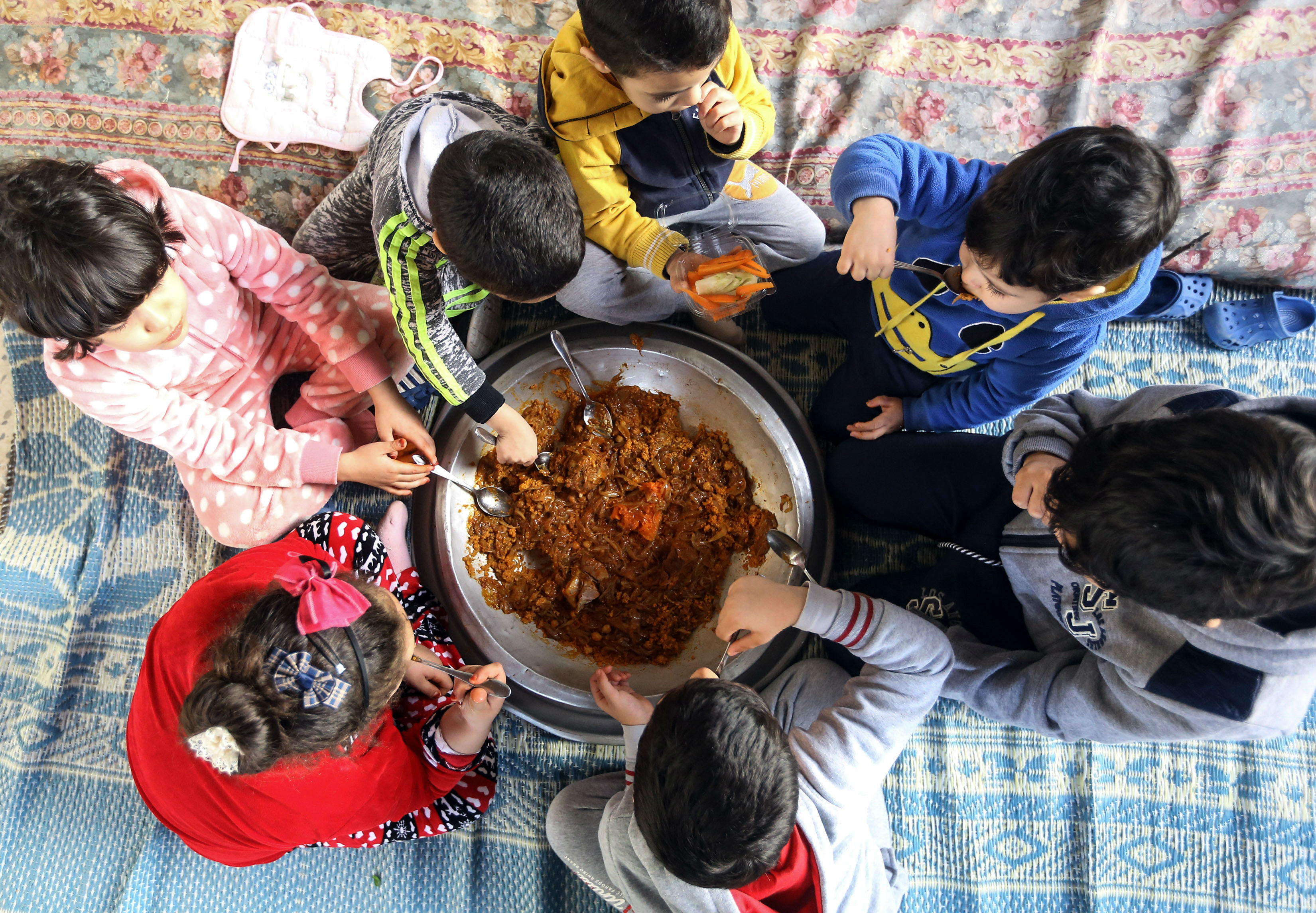Sharks, pumpkins and icing sugar: Who has the best couscous in North Africa?

Few rivalries in the Arabic food world match that between North Africans about their couscous.
From the Atlantic coast to the Red Sea, each nation has its own idea of how to cook the ubiquitous dish and what to put in it.
Of course, their version is the only one that matters.
Couscous itself may look like a grain but it is actually a form of pasta, consisting of semolina flour, durum wheat and water. Usually it is cooked in boiling water or steamed, resulting in the light fluffy consistency for which it is renowned.
While the popularity of couscous has spread throughout the Middle East and beyond to Europe, Brazil and western Africa, its spiritual heartland is North Africa, where it is believed to have originated in the early 7th century.
Stay informed with MEE's newsletters
Sign up to get the latest alerts, insights and analysis, starting with Turkey Unpacked
But where in North Africa produces the best couscous? We asked an advocate for each country to put forward their cause.
Feel free to join the debate on Twitter, Instagram and Facebook.
Tunisia: Everything but the kitchen sink
If there's one thing the 11 million inhabitants of Tunisia – and those abroad – agree on, it’s the greatness of their couscous, known as "kousksi".
A staple in the national diet, it's considered one of the country's signature dishes, to be lauded alongside the singer Latifa (yes, she's Tunisian) and the word "barsha" (meaning "a lot") whenever one or more Tunisians are at a gathering.

Kousksi is not that dissimilar to other couscous varieties in the region, but it does have one crucial ingredient – its sauce. Any true version must be soaked in a red and spicy harissa-based sauce. Tunisian couscous without the pepper-based sauce is a cultural faux pas, even borderline offensive.
Tunisian couscous can be made with a variety of meats or vegetables, but there's one version that the squeamish choose to avoid.
For ousbaan, the chef takes the lining of a sheep’s stomach, empties its putrefying innards and then stuffs them with vegetables, bulgar, meat and bits of the animal. No idea what it tastes like. I refuse to eat it.
Most versions require the same spices - namely all of them. Tabel is the favoured spice blend for Tunisian cuisine, containing coriander, caraway, garlic and chilli powder. Sheep-based or not, all variations of kousksi include a large and colourful selection of in-season vegetables.
But when it comes to couscous, Tunisians go one step further, also throwing in cumin, ginger, turmeric and cinnamon for good measure.
Small wonder that kousksi holds a special place in Tunisian hearts as a wholesome dish, often eaten out of a communal clay dish, that brings families together.
It's this emotional attachment and its connotations of togetherness that make it unlike - and better than - other couscous in the region.
Arij Limam
Morocco: No pumpkins, no couscous
Morocco is a country famed for hospitality and tourism, and couscous is an important ingredient in that.
For us, the couscous is all about the spices and the flavours, especially saffron. We use a lot of saffron. And we use semnah, a kind of butter with a strong flavour and which is traditionally homemade.
To cook the couscous you steam it first in a pot known as a couscousier: the meat, vegetables and sauce go in the bottom before the couscous is placed in another pot on top and is then cooked by the flavoured steam from below.

Moroccan couscous has to be cooked three times. For the first stage, we steam it with salt and water. Then we roll it with our hands. After that we again steam it with salt and water and then roll it again. Every time we can see the grains of couscous getting bigger. Finally, we add the semnah and cook it with the vegetables and the meat.
The way that couscous is displayed is also important. In Morocco, we serve it in a round clay tray with a high edge called a cassriya. We put the couscous in first, then make a hole in the middle and put the meat and vegetables on top, then take the sauce and put it around the couscous. We put the rest of the sauce in a bowl on the side for anyone who wants more.
Couscous is a very social meal: everyone sits around the table and traditionally eats it with their hands. At the end of the meal you might mix some plain couscous with buttermilk, like porridge. It is good for digestion.
There is also a sweet version called tfaya with onions and raisins that is made for Eid and celebrations.
We use a lot of pumpkins (al-qaraa) and couscous without pumpkin isn’t real couscous
A famous Moroccan dish is couscous with seven vegetables: the most popular ones are pumpkin, potato, butternut squash, courgette, turnip, parsnip, tomato and onion. We also have to throw in a bunch of coriander or parsley, not chopped. We don't use garlic.
Every region has its own variations, but the most popular couscous I would say comes from the Dukkala region, and from around Casablanca and Kenitra. We use a lot of pumpkins (al-qaraa), and couscous without pumpkin isn't real couscous.
Laila Badri
Algeria: Taking the middle road
Although there are many versions of Algerian couscous made for different occasions, the main and most popular is a lamb stew complete with carrots, courgettes, chickpeas and other vegetables in a red tomato sauce derived from cinnamon and black and red pepper.
It all sits on a bed of fluffy white couscous that has been steamed and mixed with butter ghee.
I know what you're thinking – it sounds like every other North African couscous. Wrong!

Algerian couscous is neither spicy nor sweet and is fairly mild compared to neighbouring varieties that use harissa (yes Tunisia, we're looking at you) or cardamom and saffron.
The base of Algerian couscous is much more buttery, with the butter ghee mixed in before the lamb and vegetable stew are added.
Comforting and communal, it is traditionally eaten after Friday prayers on a large plate so that family and friends come together.
The more celebratory version is reserved for special celebrations such as weddings, and boasts chicken, courgettes, turnips, chickpeas, onions and a sprinkle of cinnamon. It is usually accompanied by elben, a thick buttery yogurt drink.
Abdounour Berrah
Libya: Spice and 'shark'
When many Libyans think of "cousksi," they think of home.
In some respects it is similar to Tunisian couscous, including a rich tomato sauce base. But Libyan couscous is more a flame orange rather than the red of its neighbour. Its distinctive taste is achieved by including the spices in the couscous and not just the sauce.
It is dominated by busla - a topping made of stewed onions that have been cooked in olive oil until sweet, mixed with plump raisins and flavoured with cinnamon. Busla is scattered across the face of the entire dish, and is really what ties it all together.

Libyans also add chilli and a lot of olive oil into the stew, making the heat unavoidable and crucial throughout the eating experience.
Forget any ideas of plonking Jaws onto a bed of couscous – these are the smaller members of the shark family
Fear not if you can't cope with flame food - the combination of vegetables used, such as carrots and potatoes, along with large helpings of tender lamb, offset the spice and add texture without stealing the show.
Several variations can be found across Libya, including one favoured by traditionalists that is topped with homemade chips or potato fries.
In eastern Libya couscous is served with "kalb al bhar" – which translates as "dog of the sea" or even "shark" locally. But forget any ideas of plonking Jaws onto a bed of couscous – these are the smaller members of the family.
This piscine variation isn't popular with the younger generation, who find the taste over-powering and the texture somewhat strange.
Jenan Ashi
Egypt: Less a dish, more a sugar rush
Egypt, the Arab world's most populous nation, often goes against the grain (sorry, I couldn't resist) when it comes to food – and couscous is no exception.
Others may be content with carrot or courgettes or chicken, but which nation treats couscous as a dessert?
Yes, much to the horror of other North Africans (including my own colleagues), Egyptians don't do the whole tagine thing.
The ingredients and instructions for Egyptian couscous are simple – very simple.
First you cook it, just by boiling it. Next fry it in samna baladi, which is a bit like ghee: the version made from water buffalo milk is white, while that derived from cows looks yellow. Ordinary butter will also do.
And then – there is no better word - drench it in icing sugar. Lots of icing sugar.
It's unclear how anyone first decided to put icing sugar on couscous. But in Egypt it is such a normal thing that my parents were surprised to learn that couscous could be eaten savoury.
If it all sounds ridiculous, then consider Hawaiian pizza and what that has done to the Neapolitan original
The dish is popular throughout the country, served both as street food and in homes as a dessert at the end of an "azouma" (gathering).
Toppings are optional and feel faintly redundant giving the impending sugar rush,but the odd nut or raisin is often added as a token acknowledgement that there are food groups other than pale carbs.
If it all sounds ridiculous, then consider Hawaiian pizza (pineapple and ham) and what that delicacy has done to the Neapolitan original.
So yes, a sweet-tooth obsessed nation of 100 million has found a way to make something that should be healthy and savoury into a diabetes-inducing feast instead.
And that's why we love it so dearly.
Osha Mahmoud
Middle East Eye delivers independent and unrivalled coverage and analysis of the Middle East, North Africa and beyond. To learn more about republishing this content and the associated fees, please fill out this form. More about MEE can be found here.




